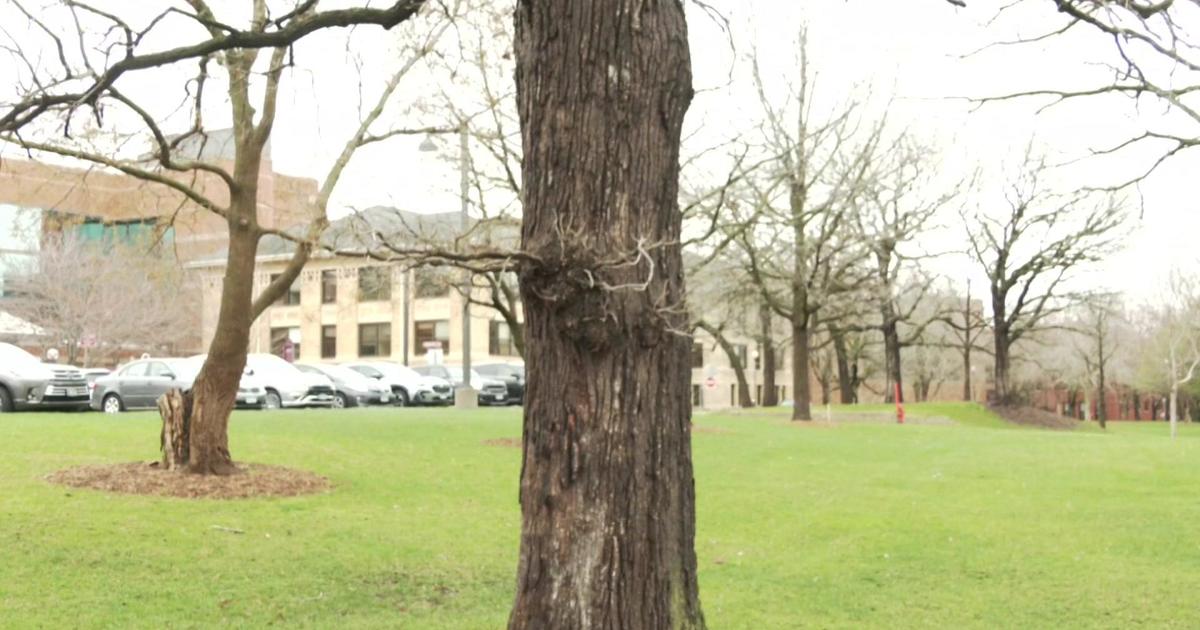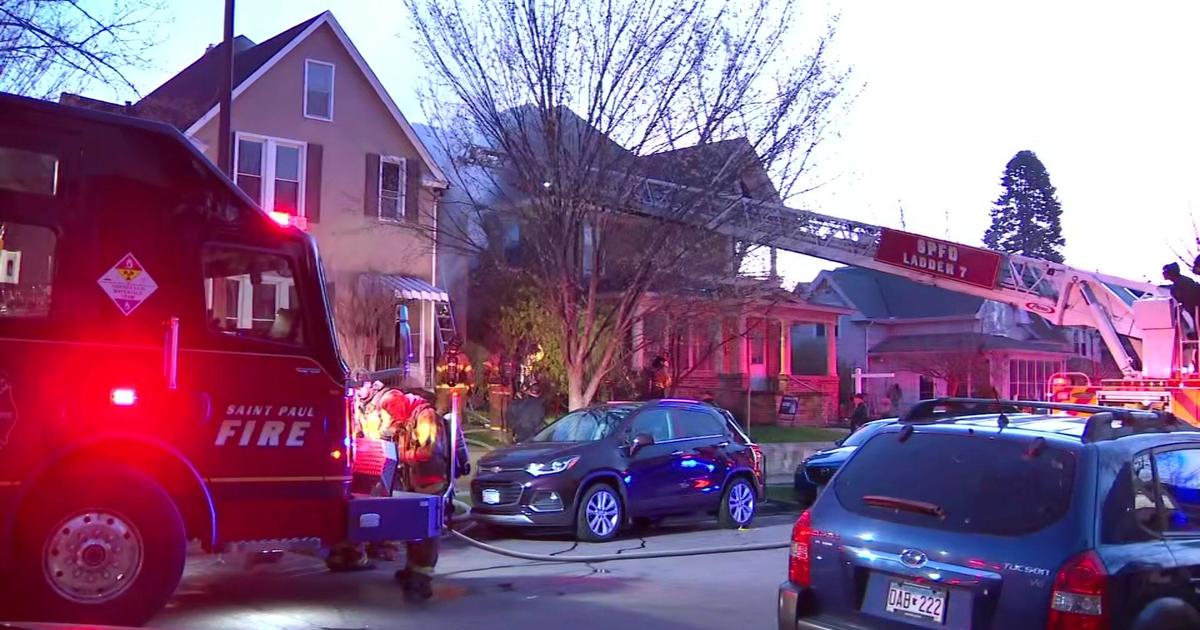Full Transcript: Gov. Dayton's Final State Of The State Address
MINNEAPOLIS (WCCO) -- Gov. Mark Dayton gave his final State of the State address to a joint session of the Minnesota legislature Wednesday night. Below is a full transcript of the governor's prepared speech, as provided by the governor's office.
--------------------------
Madam President, the Majority and Minority Leaders, and Members of the Minnesota Senate. Mr. Speaker, the Majority and Minority Leaders, and Members of the Minnesota House of Representatives. Madam Chief Justice and the Distinguished Members of the Minnesota Supreme Court and the Court of Appeals. My fellow Constitutional Officers. And my fellow Minnesotans.
Some people have suggested I conclude my speech now, to make certain I can walk out by myself. However, this is my final State of the State address, and there is more I want to say. So, cross your fingers, Hugo, here we go!
As I prepare to leave office, I want to thank the people of Minnesota, who twice voted for me to serve as their Governor. And thank the Legislators, supporters, and allies, who helped us succeed. To my fabulous staff, fantastic commissioners, and other key appointees, you have my eternal gratitude. You deserve so much of the credit for our administration's successes. Your dedication has been extraordinary; your wisdom exceptional; and your resilience remarkable.
I want to thank my family, who have counseled me wisely, supported me steadfastly, and endured me patiently: my sensational sons, Eric and Andrew; daughter-in-law, Cory; grandsons, Hugo and George; my former wife and dear friend, Alida Messinger; my father, siblings and spouses, uncles, aunts, and cousins. Without you, I would not be here today.
My father used to say, "Time flies, when you're having fun; and even when you're not." Being Governor was not fun, when I took office in January 2011. State Government was in terrible financial condition, with a $6.2 billion deficit forecasted for the next two fiscal years. The state had "borrowed" almost $2 billion from our public schools, and had used millions of dollars more in shifts and gimmicks to mask the full extent of the deficit.
You might remember that I campaigned for Governor in 2010 on a pledge to raise state income taxes on only the wealthiest 2% of Minnesotans, and not on the other 98%. In 2013, with DFL majorities in both the House and Senate, we passed that 2% increase on the top 2% of our taxpayers.
The change has made Minnesota's tax system more progressive and has been crucial in turning chronic budget deficits into steady surpluses; paying off the state's debt to our schools; eliminating other fiscal shenanigans; and building a $1.9 billion budget and cash reserve.
We have restored fiscal stability and integrity to state government. I thank those Minnesotans, who did pay higher personal income taxes, and the great many others, who expanded their businesses and created over 280,000 new jobs, since I took office. The hard-working people and businesses of Minnesota are the sources of our renewed economic prosperity and the foundations of our future success.
What must we do to continue that success? Tax cuts are some people's answers. Tax cuts are always some people's answers. In 1997, what is now the MN Center for Fiscal Excellence published its first "How Does Minnesota Compare?" with the other states. In FY 1996, Minnesota's Individual Income Tax Collections per $1000 of personal income ranked us 3rd highest among the states. A Republican Governor. 3rd highest income tax state.
In FY 2002, the last year of an Independence Party Governor's term, Minnesota still had the third highest personal income tax collections among all the states. In FY 2010, the last year of my Republican predecessor's term, Minnesota's personal income tax collections per $1000 of income were the 6th highest among the states.
In the Center's latest report, published last September, Minnesota's Personal Income Tax Ranking was again 6th highest, the same as it was in FY 2010.
Minnesota has not been a low tax state during my career. And it's fortunate, because states with the lowest taxes generally rank among the lowest in per capita income, household income, educational attainment, home ownership, and public health.
By contrast, Minnesota's total job creation, average household income, and state economic output have improved steadily – both in real terms and relative to other states. It's not that raising taxes is, by itself, a good thing; it's that investing those revenues in education and infrastructure, produce far better returns in improving our economy's vitality and our residents' well-being. They produce more jobs and better jobs.
If we, and our successors, preserve our state's fiscal integrity and invest our present tax system's revenues in even better education, infrastructure, and transportation, we will continue to offer better jobs, with higher incomes and other benefits to our residents. If we don't, we won't.
During my two terms, we have made substantial increases in our state investments in education — in our people — starting from early childhood; to universal, all-day kindergarten; all the way through elementary, secondary, and postsecondary. This school year, nearly 80,000 children are attending all-day kindergarten and early learning programs thanks to those wise investments; and they are getting better starts in school and life because of them.
Business after business tells me the number one reason they are locating or expanding in Minnesota is because of the superb quality of our workers. One major industrial operation in northern Minnesota, told me just last week that his company has 14 plants throughout North America. When he is recruiting new customers, he brings them to his plant in Minnesota — to show off his workers' exceptional productivity, the quality of their products, and their skill in making them.
Those qualities are engrained in our state's people, which they pass on from one generation to the next. But they must be nurtured, trained, and employed to achieve their full potentials. Minnesotans understand the importance of education, but what most don't realize is how badly the state's financial support had slackened in the years before I became governor.
When I started, the state's funding for elementary and secondary education per $1,000 of personal income, was in the bottom half of the fifty states. Most recently, we ranked 18th, according to the Minnesota Center for Fiscal Excellence. That's better, but it's not good enough.
And it explains why our public schools are constantly having to hold special property tax referendums to ask for what should be funded by the much more progressive state income tax. With us here tonight is Mr. Corey Bulman, a high school teacher in the Mound Westonka school district. Mr. Bulman is Minnesota's Teacher of the Year.
It is thanks to him and Minnesota's thousands of other dedicated teachers that last year, our students once again topped the nation on ACT college entrance exam scores. Our teachers and our students deserve our strong support.
State government's funding for higher education has also declined. In 2012, state support for the University of Minnesota, Minnesota State, and Financial Aid was, in real dollars, the lowest it had been since 1981. Once again, we have restored some of that loss, but we have still shifted too much of the costs of attending our state colleges and universities onto students and their parents.
Both Minnesota State and the University of Minnesota were funded well below the systems' requests last year. The University just announced that with $10 million of additional state funding in this Session, it will not need to increase tuitions next school year. I will include that $10 million in my Supplemental Budget request, along with an additional $10 million for Minnesota State, and I urge the Legislature's support.
Our two outstanding postsecondary leaders, University of Minnesota President Kaler, and Minnesota State's Chancellor Malhotra, are with us tonight. I salute you both, and thank you for your service.
Further damaging the future success of our colleges and universities is the chronic inadequacy of our state's capital investments in their campuses. It's almost impossible to provide world-class educations in antiquated buildings with leaky ceilings, dilapidated bathrooms, worn-out exteriors, and in classrooms without advanced technologies and other learning aids.
That is why my Bonding Bill provides more money for capital improvements on Minnesota State and University of Minnesota campuses than either system requested. I know they asked for less than what they need, because they thought that was all the Legislature would support. Well… Surprise them!
If we invest more in education, future generations of Minnesotans will be more successful. If we don't, they won't.
Another priority of my Bonding Bill is infrastructure. Since I could not meet all local needs, I made, as my priority, water infrastructure, especially projects to make our residents' water cleaner and safer. In addition to the $105.7 million in last year's bonding bill, I would provide the Public Facilities Authority with an additional $167 million to ensure that more Minnesotans have the clean water they need. Over 170 local water infrastructure projects across our state cannot move forward without this funding. Please provide that safety in your bonding bill.
Another crucial area for infrastructure investments is in transportation, which also was poorly financed for years. Everyone driving in our state knows that traffic congestion and highway conditions keep getting worse, wasting their time and straining their sanity.
After years of my urging, the Legislature finally started to increase state expenditures for road and bridge repairs and improvements. Unfortunately, most of that additional money has been taken from the General Fund, $588 million last Session.
That's a convenient solution — for as long as state budget surpluses continue. However, some people are now proposing to transfer ALL revenue collected from sales taxes on motor vehicle repairs and maintenance from the General Fund to the to the Highway Fund, and even dedicate it constitutionally. Such a transfer would cost the General Fund $1 billion, 354 million dollars over just four years. It would further undermine the structural surpluses in future bienniums.
While I support additional investments in our transportation infrastructure, I strongly urge legislators to consider carefully the fiscal impacts of this deceptive solution, and instead look to sustainable, long-term financing for the roads, bridges, and modern transit systems Minnesotans need.
Restoring fiscal stability to our state budget is one of the most important legacies I can leave Minnesota. During my final year in office, I will not support any budget, tax, or policy proposals, which would threaten that stability. I urge legislators to do the same.
We face other major challenges. After several years of lowering the state's uninsured rate under the Affordable Care Act, 116,000 Minnesotans have lost or dropped their health insurance during the past two years. Our state's uninsured rate jumped from 4.3 percent in 2015, the nation's second lowest, to 6.3 percent last year.
The number one reason was that people could no longer afford it. Or they were fed up with being charged higher premiums and deductibles for lesser coverage.
Therese and Brian Romsdahl, who grow corn and soybeans and raise beef cattle in Butterfield, have joined us here tonight. Like most Minnesota farmers, they are being hurt by exceedingly low commodity prices. Now they are being charged $33,000 this year for their health care premiums. That's outrageous and it's wrong.
Meanwhile, some insurance companies have stopped offering individual coverage, because of lower returns and Washington's uncertainties. This exodus has caused many Minnesotans, especially those living in rural areas, to lose their previous insurance carriers and often their established networks of doctors and providers.
"Pay more for less" has never been popular. People quickly ask, "What are my other options?" Right now, for affordable health insurance, they have none. However, this Legislature has the opportunity, and the responsibility, to offer Minnesotans another option.
For 26 years, MinnesotaCare has given lower-income working families quality, affordable choices when purchasing their health insurance. I believe we should give all Minnesotans that option. After its startup, the operating costs of this new "MinnesotaCare Buy-In" would be paid entirely by its members' premiums, so there's no ongoing expense to other taxpayers.
For some families, the MinnesotaCare Buy-In may offer better health care coverage at lower costs. That is exactly what competition is supposed to do for consumers. Legislators have a very clear choice. They can side with big insurance companies, who don't want this competition; or they can side with Minnesotans, who do.
Minnesota lawmakers face another clear choice this session. They can side with the NRA, who strongly opposes commonsense solutions to reduce gun violence in our schools and communities, or they can side with the schoolchildren of Minnesota who are begging us for it.
On Monday, four State Senators courageously stood together on the side of our students. I thank them for their legislation to extend criminal background checks to all gun purchases and require all lost or stolen firearms be promptly reported to law enforcement. Those changes will help keep guns out of the hands of people who shouldn't have them. They will save lives.
I want to thank the many legislators in this Chamber – from both parties – who are fighting for these and other life-saving measures to reduce gun violence in our state. I will sign that legislation the minute it reaches my desk.
The recently passed federal tax bill is extremely complex and defies a simple solution. If we conform state personal and business taxes completely to the federal changes, some Minnesotans would owe more state taxes, while others with the same incomes would owe less. If we do nothing, the federal changes would cause significant increases in other people's state taxes.
Either way, thousands of Minnesotans would be hit with state personal income tax increases. That is not fair; and it's not right. Minnesotans deserve better. Last year, the Legislature reduced business property taxes for each of the next ten years. The federal bill just cut the corporate tax rate by a whopping 40 percent. Combined, they provide huge tax cuts to Minnesota businesses.
So, our number one priority — which will be reflected in my budget on Friday — should be tax fairness for individual Minnesotans and their families.
I am very proud of our state, proud of what Minnesotans have accomplished here. U.S. News and World Report recently rated Minnesota the second best state in the country, up from third best the previous year.
USA Today said we're the nation's Best Run state; AARP ranked us the very best state in which to retire. And CNBC says we're the third best state for business. We're not perfect; but, compared to everyone else, we're very good.
I say again that the credit belongs to the people of Minnesota. We ARE our people, but we're only as good as all of us are. That means ALL of us, in a state with rapidly changing demographics, in which 19 percent of our residents are now women, men, and children of color.
That is a very different complexion from years ago, and some folks still resist the change. If we can educate them to move beyond racism, religious bigotry, and other hatreds, they will see that this new diversity is crucial to our state's future success.
There are simply not enough native Minnesotans to drive our future economic growth. There are already too few unemployed workers to fill our state's current job vacancies. And that labor shortage is expected to become even more acute. The additional workers we need to expand our economy must come from the newcomers to our state.
Adjusting to this new reality is hard for some Minnesotans. But trying to push Minnesota back fifty years is neither a realistic option nor a good idea. I want to be VERY clear. Minnesota is an inclusive and welcoming place for all.
During the past few years, the State of Minnesota has led by example. Since 2015, the percent of state employees with disabilities has grown by 40 percent; the percent, who are men and women of color, has increased by 50 percent. That is important progress, but we have much more to do to ensure our state government better includes and serves the rich diversity of our state.
As I conclude, I want to acknowledge all the important issues I did not address tonight. But my time is running out, so I must leave them to all of you. I again want to thank the people of Minnesota, who have supported my career in public service. It has given me so much — and so much more than I could ever return.
Best of all are the extraordinary people I have encountered throughout our state. People I could never meet any other way. Shouldering their hardships and celebrating their achievements have cemented the bonds of our shared humanity. We are each so uniquely different; yet we are all so much the same.
From my experiences in places like Iraq, Afghanistan, and the poorest parts of New York City, I have come to realize how much our lives are proscribed by where we land at birth on this planet.
And then by the economic and social environments in which we live.
I believe most of us are incredibly fortunate to live in Minnesota. Despite our challenges, there is nowhere else that compares.
Previous generations worked hard to build and then leave us what we have here. Now it's our responsibility to make it still better for generations to come.
Our model should be this magnificent State Capitol building, which just a few short years ago, was in dangerous disrepair. But all of us here set partisanship aside. We came together, worked together, and even kicked ourselves out of this building, until its restoration was completed.
Look at what we accomplished, by working together. Just imagine, what more we can do, if we continue.



